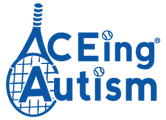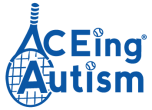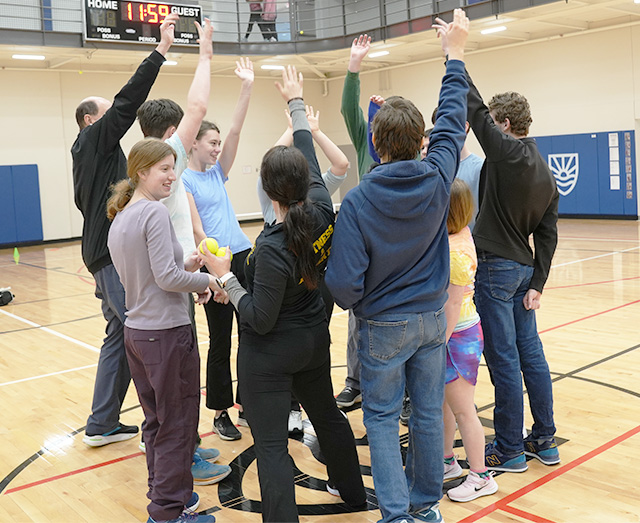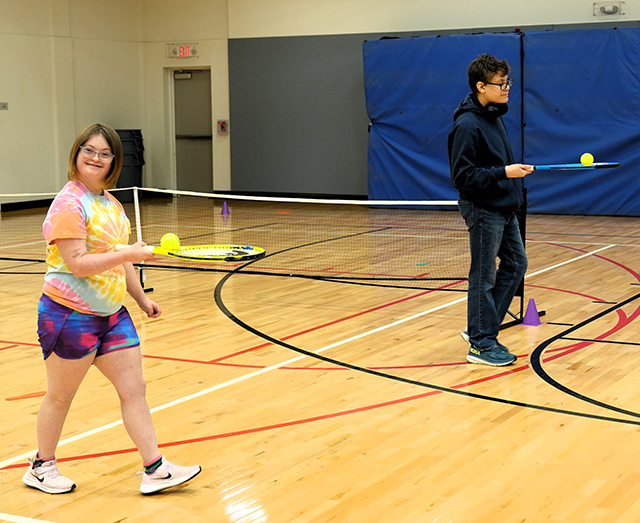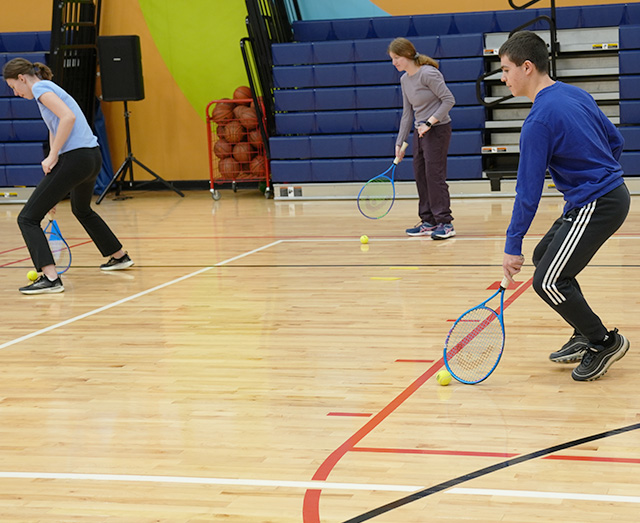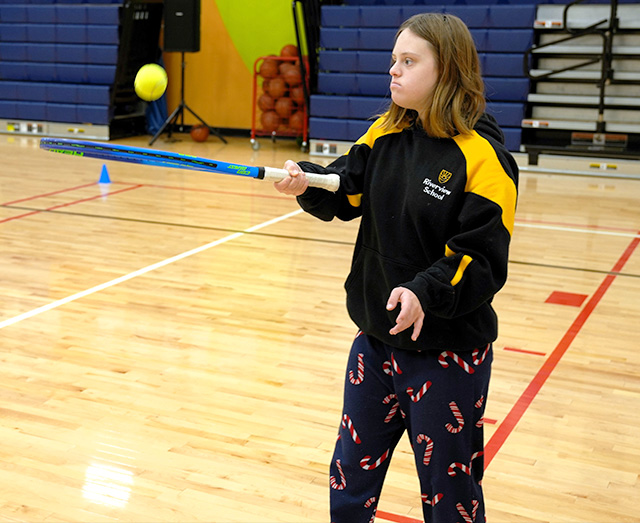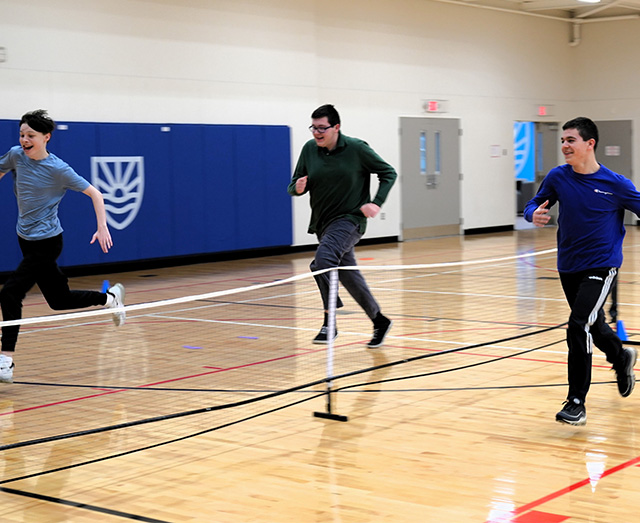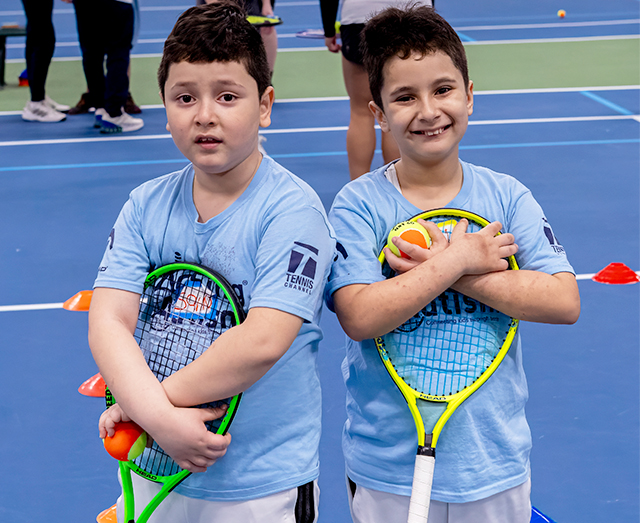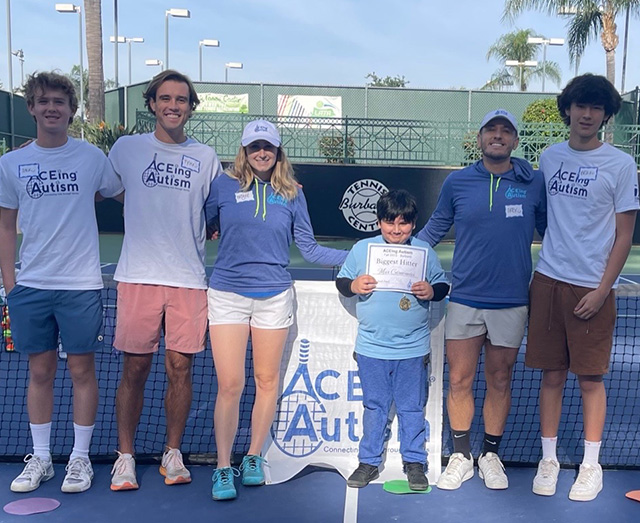How was your experience in implementing the program?
Implementing the ACEing Autism program in a physical education setting was a smooth transition from clinic to classroom. The structure of the program along with the visual schedule provided helps create a predictable learning environment for students in which they know what is expected of them in class and what comes next. This allowed me to put clear procedures into place, get students into a good routine, and aided us in moving smoothly from developing one skill to another.
What made you want to implement ACEing Autism in the first place?
We have always felt tennis was an excellent recreational sporting opportunity for our students. Learning the aspects of the game could provide students with a great fitness and social opportunity after leaving Riverview. Tennis was regularly included in our after-school recreation offerings, however, we lacked the resources to provide tennis at a level that we felt was fully enriching to the students. ACEing provided us with the resources and training to lead students through a tennis experience that far exceeded anything we had offered in the past.
You started ACEing Autism in 2022, how have the sessions gone? How often do you have ACEing Autism a week and which age group?
We offer ACEing as an after-school recreation choice in the Fall and/or Spring, which is one day a week for 6-8 weeks. Our PE teachers also lead a tennis unit during the winter that students participate in two times a week for 4 weeks. Age group is 13-22 years old.
Anything surprising?
Before the ACEing training our tennis programming consisted of limited drills with mostly modified gameplay. We assumed that some students might be looking for more gameplay opportunities and that we would need to explain that ACEing focuses on skill building before getting to gameplay. To our surprise the students were so engaged and happy with the programming we didn’t have any students asking for more gameplay.
Have you seen improvements in the players, if yes, what kind of improvements? Tennis? Social? Mental health? Others?
We have seen great improvements in our students hand-eye coordination and racquet skills over the course of them participating in ACEing. The use of these drills at the beginning of each lesson has helped pave the way for them to be more successful in other tennis drills, activities and in modified gameplay. We have also seen great improvements in our students’ ability to move effectively on the court, as well as strike the ball with greater accuracy and with the appropriate amount of force.
What other benefits have you seen from this program?
We have had more students choose tennis for the after-school recreation than we ever did in the past. In the past we would usually have groups of 6-8 that were interested, however ACEing regularly draws about 16 or more students.
The PE teachers really liked the format and design of the program and saw how well the students responded to it and revised their other sports units (basketball, soccer, volleyball, etc..) to follow a similar design.
Any fun stories that stood out to you?
What stands out to me in the sessions, is how supportive the students are to one another. The ACEing program really makes it possible for all students to be successful and because of this, students are rooting for each other. When working in partnerships they are offering one another suggestions and cues to help each other improve their skills, but also offering one another praise for a job well done, or for acquiring a skill that they have been working on. The games at the end of each lesson also really help bring the group together as they are having fun and working towards a common goal in many of the activities.
Have you made any adjustments throughout the years and sessions?
Over the past couple years we have made minor adjustments to meet the specific needs of our students. At times, sticking with a component of the ACEing program for a longer duration of the lesson to really hone in on what students need more practice with, such as serving. We have also added a few drills that we believe melded well with those of the ACEing program. Lastly, we have utilized adaptive equipment and offered it using a Universal Design for Learning approach just as the ACEing program does, such as utilizing tees for students to practice their groundstrokes in a closed environment. For example, we have tennis balls that we suspend from above to allow our students a chance to practice their overhand serve.
How has it felt bringing on this program in your school? What has been the best part?
The best part of this program has been seeing how much fun the students are having. When the unit ends they all want more tennis, oftentimes signing up for the clinic once the P.E unit has ended. In addition, seeing the way the students work together and root each other on is amazing, more than once I have seen students complement their opponent, even when they scored on them!
